Ilza Burchett – The “No” Space of Minimal Art

It will be no exaggeration to say that since the minimal art movement of the 1960s became a self-conscious phenomenon with its philosophical maxim of “more is less” and “less is more”, minimalism as an aesthetic ideology had and still has a profound impact and influence on nearly every aspect of culture and industry throughout the world.
So, it should be no surprise that today artists still revere minimalist principles and employ lessons gained from its cool conceptualizing of the aesthetics of the void.
The solo exhibition of artist Vuong Tu Lam presents the results of his claim to conscientious choice of working within the doctrine of minimal art — more specifically geometric abstraction.
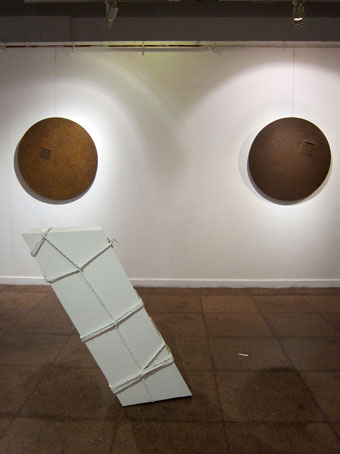
We read that the artist studied Cezanne, Mondrian and Rothko and by way of personal lessons extracted, has arrived to his artistic preoccupation with minimalism.
Be as it may, one can not deduce and evidence these personal intellectual lessons from viewing the works in this exhibition — much less, when the history of the 20th century art has allocated a significant chapter in its development to the actual 60’s minimalist art movement — born in New York and distinctly belonging to the development of American art of the 20th century — as defined and expressed by artists of a caliber and worldwide status like Donald Judd, Frank Stella, Robert Morris, Carl Andre, David Smith, Tony Smith, Sol Le Whit, Dan Flavin, Richard Serra, Agnes Martin, Ellsworth Kelly, etc.
Vuong Tu Lam’s circular and rectangular wall pieces and free-standing roped geometrical objects (with the exception of one hang on a wall), are his personal and very rational attempts to reconcile the idea of pure abstraction or “no” content (an idea expressed by Malevich in his famous “end of painting” “White on White”,1918) and the impossibility of saying anything further on the subject as an artist, without infusing the “no” space of it with his personal choice of content — be that his signature — thus contradicting the essential tenet of minimal art: eradicating signs of any authorship in a work of art.
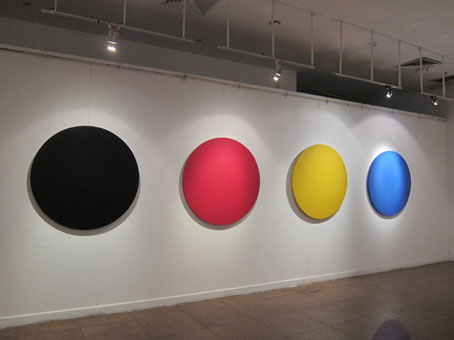
The series of circular 120cm-across canvases painted neatly in the primary red, yellow and blue plus black and white colors, have no added novelty or aesthetic value in any way one is to look at those, apart from registering the rather vain presence of the artist’s signature, which automatically implies that the artist is claiming artistic rights not only on the painting itself, but on the “content” of it — be that plain color or the shape of the stretcher.
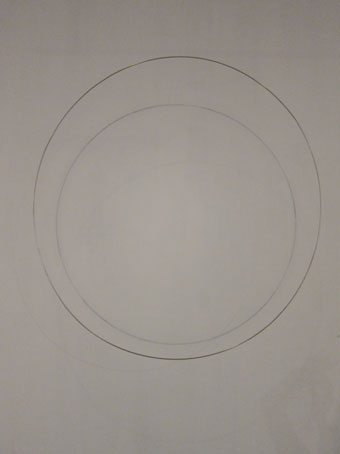
The closest to the minimalist ethos is his three-dimensional stainless steel circle piece called “Metaphysics”, which by its elementary physicality is bridging the space traditionally allocated to sculpture with that of a painting; where the work seem to actually create the all-important minimalist “no” space by being hang suspended at a distance from the wall.
Unfortunately, on close inspection this impression is not sustained but annihilated, as the artist went on to outline the imaginary projection of the work on the wall (a faintly painted circle) as if to explain the difference between painting and an object, thus negating the idea itself.
There is nothing to be said about the works in this exhibition that could be enlightening in terms of what contribution to minimalism they may make on an intellectual or aesthetic level.
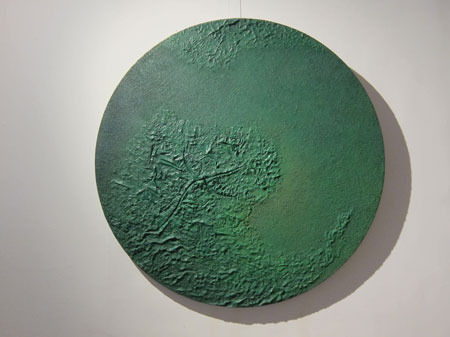
It seems that it would have been more innocent if the artist did not claim the minimalist art mantle to his works, as in many of them the inserts of textural forms, marks and allusions; especially allusions to concepts in the naming of some of them “Color of Spring”, “Labyrinth”, “Standstill of time”, which are speculative and irrelevant to the radicalism and the concept of minimal art — could have afforded the viewer the possibility to perceive and appreciate better his work and this exhibition.
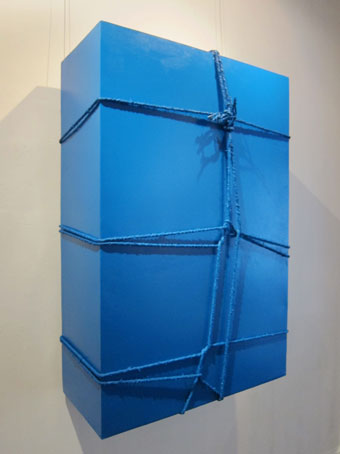
![]()
| Ilza holds the deep conviction that there is nothing more damaging than indifference and that only a critique, based on peer to peer assessment of contemporary art practices, is the way to broaden and encourage the creative thought and new original artistic ideas — fostering a better understanding of contemporary visual art and the role of the artist as a creator of cultural values. Ilza Burchett is an internationally exhibiting artist, now based in Hanoi, Vietnam. |



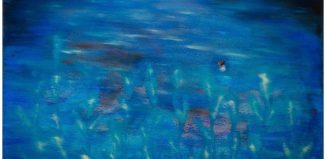











Ilza,
thank-you for this approachable and articulate review. It’s refreshing to read content on Grapevine that goes beyond the personal and does include an element of critique such as this. There is clearly a lot going on in this work, so thank-you for launching the discussion. cheers!
Hi Sue,
Many thanks for your comment — much appreciated.
Indeed, it will be to everyone’s benefit I believe, if discussions on contemporary art start to actually happen on the pages of The Hanoi Grapevine.
Cheers!